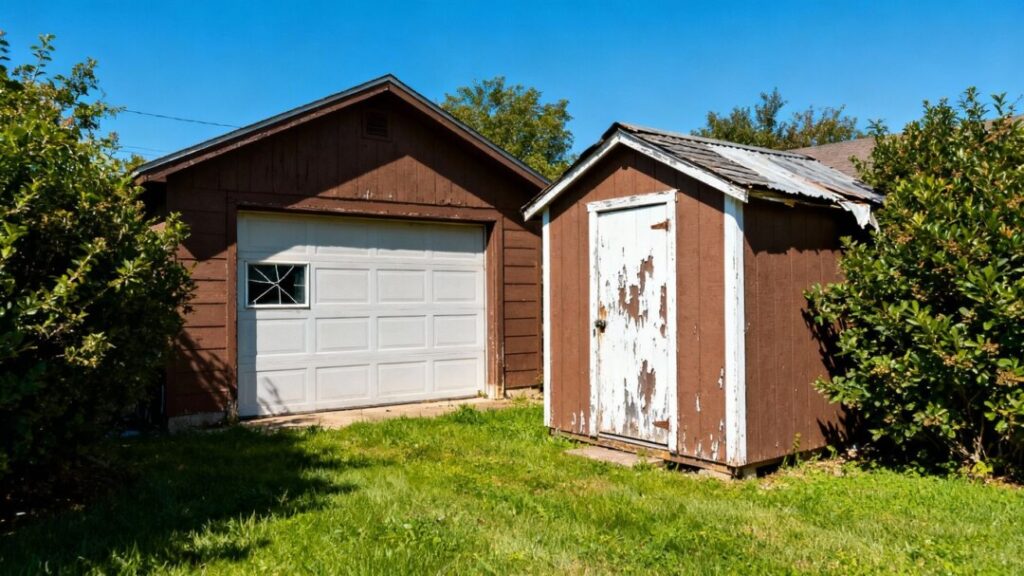When buying a home, many buyers trust home inspectors to thoroughly vet every structure on the property. However, detached garages, sheds, and workshops often escape detailed scrutiny, potentially leaving new homeowners with costly surprises long after purchase.
Key Takeaways
- Detached structures like sheds and garages usually fall outside the standard home inspection scope.
- Major problems—such as structural issues, roofing damage, or unsafe wiring—can go unnoticed until after closing.
- Regional climate plays a big role in what issues are most likely to develop in outbuildings.
- Homebuyers should request dedicated inspections for all outbuildings to avoid unexpected expenses.
Why Detached Structures Don’t Get Thoroughly Inspected
Home inspections usually focus almost entirely on the main residence. While inspectors assess the core systems—roof, foundation, plumbing, and electrical—detached structures like sheds, garages, or workshops are often overlooked or only superficially checked. In many cases, the standard inspection agreement specifically excludes these ‘extras’ unless the buyer pays for an expanded review.
Typical Problems in Unchecked Outbuildings
Detached structures, even if they seem simple, come with their own set of vulnerabilities:
- Foundations and Structural Integrity
Small cracks or uneven foundations can lead to significant shifts, warped doorframes, and pest entry. These aren’t always obvious without a careful inspection. - Roofing and Exterior Materials
Outbuildings typically use cheaper materials for roofing and siding, wearing out faster. Inspectors often skip climbing onto detached roofs, increasing the risk of missing leaks and damage. - Electrical Wiring and Fire Hazards
Many outbuildings have outdated or DIY wiring, often unpermitted and not up to code. While an inspector might test an outlet or switch, a full safety check requires following the wiring’s path, which is rarely done as part of a standard inspection. - Pest and Moisture Damage
Sheds and workshops are often more exposed to rodents, termites, and moisture, which can lead to long-term hidden damage. Floor rot and unseen infestations are common problems unless specifically checked for.
How Climate Shapes Hidden Risks
| Region | Common Detached Structure Issues |
|---|---|
| Lancaster | Humidity-related rot, snow load, freeze-thaw damaging foundations |
| Phoenix | UV damage, warping, dry rot |
| Seattle | Moss, mold, and metal corrosion |
The region where you live greatly affects which problems are likely to pop up. For example, what’s harmless in Phoenix can be devastating in Seattle or Lancaster, so local expertise is crucial when inspecting outbuildings.
What Homebuyers Should Do
- Request a Full Inspection: Ensure the contract details a thorough inspection of all detached structures, even if it costs extra.
- Know What to Look For: After reading the inspector’s report, ask specifically about the items listed above.
- Consider Local Risks: Have the inspector address hazards associated with your region’s climate to get a complete risk assessment.
Conclusion
Outbuildings aren’t just “extras”—they’re part of what you’re paying for. Ignoring potential issues in detached garages or sheds can lead to expensive repairs, devalue your investment, or even cause safety hazards. Invest in a dedicated inspection for peace of mind and protection against costly surprises.


